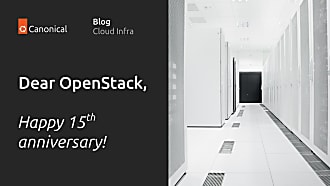Mark Baker
on 20 February 2014
Two of the most frequently asked questions about Ubuntu and Canonical are:
* So, just how do you make money when Ubuntu is free?
and
* Ubuntu is great for developers, but is it really suitable for ‘enterprise use’?
We’re trying to do things differently, so we’re not surprised by these questions. What many people hear from other successful open source companies seems to narrow thinking about the value chain and open source economics.
So lets try and explain the answers to these questions, what we are doing and why Ubuntu has a model better suited for business in 2014 than that of legacy linux. Six years ago we made the decision to base our strategy for Ubuntu Server around cloud and scale out computing. We worked hard to make Ubuntu a great instance on Amazon EC2, which, at the time was just getting going. We created technologies such as Cloud-init to handle initialisations of a cloud image. We streamlined the base Ubuntu OS image to create a fast, lightweight base for users and developers to build upon. And very importantly, we doubled down on our model of releasing to a cadence (every six months) and giving developers access to the latest technologies quickly and easily.
The result? It worked. Ubiquity has spoken and Ubuntu is now the most popular operating system in cloud – it’s number one on AWS, the leading Linux on Azure, dominates DigitalOcean and is first choice on most other public clouds. Ubuntu is also w3tech’s web operating system of the year and the Linux platform showing the fastest growth for online infrastructure whilst most others are decline. In 2012 and 2013 we saw Ubuntu and Ubuntu OpenStack being chosen by large financial service organisations and global telcos for their infrastructure. Big name web scale innovators like Snapchat, Instagram, Uber, Quora, Hailo and Hipchat among others have all chosen Ubuntu as their standard infrastructure platform. We see Ubuntu leading the charge as the platform for software defined networking, scale out storage, platform as a service and OpenStack infrastructure. In fact, a recent OpenStack Foundation survey revealed that 55% respondents are running Ubuntu on OpenStack – over double that of its nearest competitor. If you measure success by adoption, then Ubuntu is certainly winning the market for next generation, scale out workloads.
However, many measure business success in monetary terms and as one industry pundit often reminds us, “a large percentage of a market that pays zero dollars is still zero dollars”. So, lets come back to the first question: How do you make money when your product is freely available? Ubiquity creates many opportunities for revenue. It can be from paid for, value added tools to help manage security and compliance for customers that care about those things. It can be from commercial agreements with cloud providers and it can be via the product being an optimised embedded component of a cloud solution being delivered by OEMs. Truth is, Canonical is pursuing all of the models above and we are doing well out of it.
As for Enterprise use, Enterprises are now really starting to understand that new, high tech companies are operating their IT infrastructure in radically different ways to them. Some high tech companies are able to scale to 1 Billion users 24x7x365 with less than 100 staff and frugal IT budgets and Enterprises crave some of that efficiency in their infrastructure. So whilst Ubuntu might not be suitable for use in an enterprise set on legacy Linux thinking, it is very much where forward thinking enterprises are headed to stay ahead of the game.
So, the basic values of of Ubuntu Server: freely available, provide developers access to the latest technology through a regular cadence of releases and optimise for cloud and scale out have been in place for years. Both adoption and revenue confirm it is the right strategy long term. Enterprises are evolving and starting to adopt Ubuntu and the model of restricting access to bits unless money is paid is now drawing to a close. Others are begrudgingly starting to accept this and trying to evolve their business models to compete with the momentum of Ubuntu.
We welcome it, after all, where is the fun in winning if you have no one to beat?



